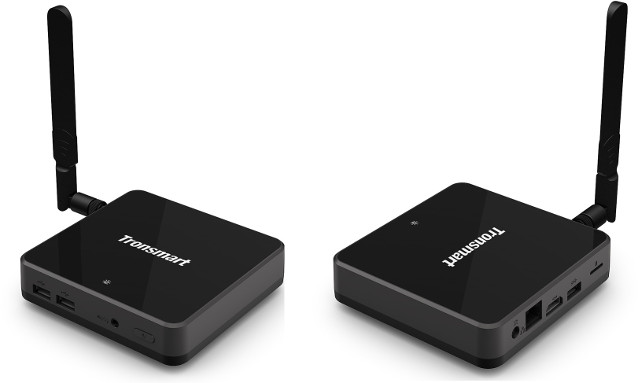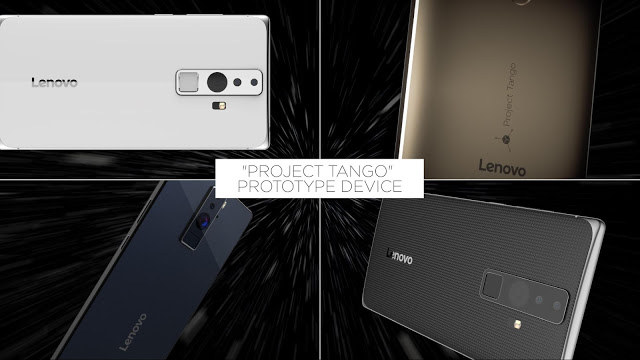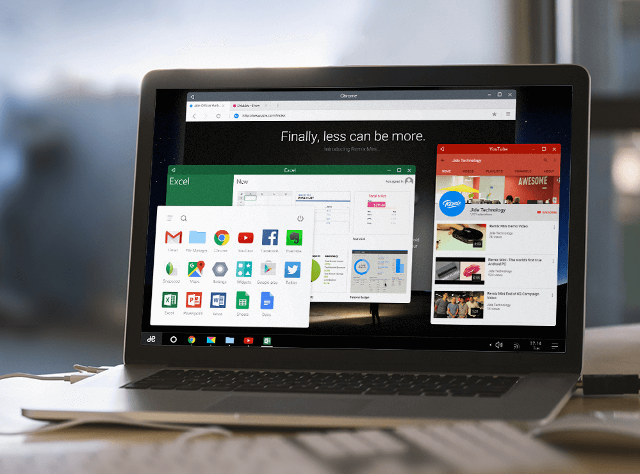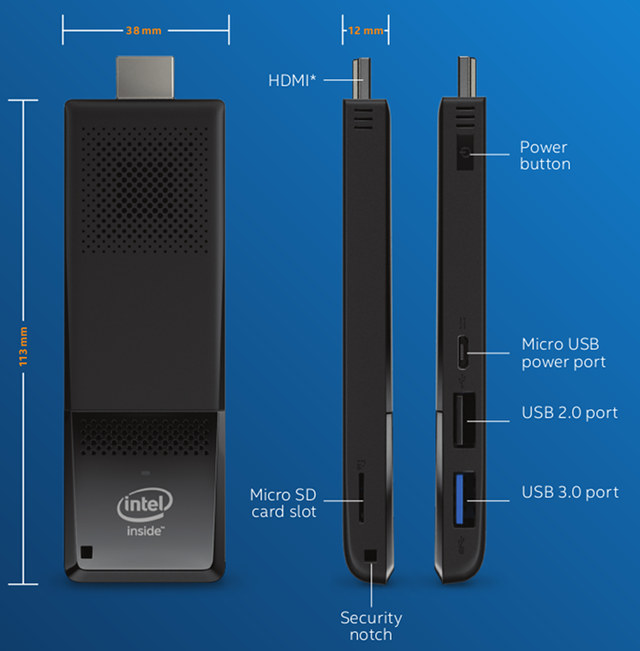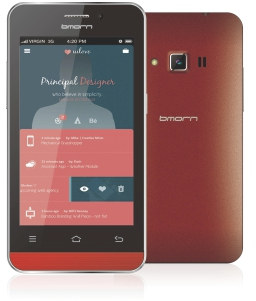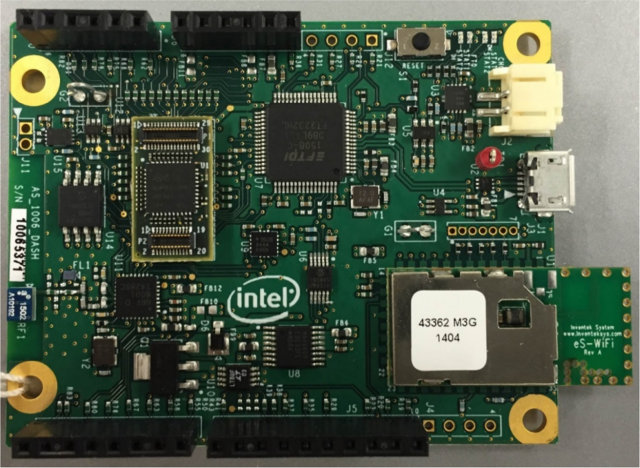Tronsmart Ara X5 was one of the first Intel Atom Cherry Trail mini PCs to launch on the market. It came with an Intel Atom x5-Z8300, and the now typical 2GB RAM combined with 32GB flash. But in my review of Tronsmart Ara X5, I found out that the flash was quite slower than other Windows mini PC I tested, and the USB 3.0 port would not recognize my 1TB Seagate USB 3.0 hard drive. The company has now introduced an upgraded model simply called Tronsmart Ara X5 Plus with a faster Samsung eMMC 5.0 flash, faster USB 3.0 read and write speeds (and hopefully better compatibility), 802.11ac WiFi support by replacing Ampak AP6330 module by Intel Wireless-AC 3160 and adding an external antenna, as well as fixed some micro SD card compatibility issues, and an updated UEFI binary that should reduce blue screen of death appearances in Windows. The […]
Intel RealSense Devkit and Lenovo Smartphone to Feature Project Tango 3D Mapping Technology
Project Tango is a project launched in 2014 by Google ATAP that aims at creating 3D map of your environment using 3D motion tracking with depth sensing for tracking your movements in 3D, precise and quick measurements, augmented reality and more. The first Project Tango development kit was a tablet based on Nvidia TegraK1, but Google recently announced that Lenovo planned to launch the first consumer smartphone with the technology. Beside the announcement that there are going to make a phone, the company did not provide many other details so far, but it should feature a screen smaller than 6.5″ and cost less than $500. The main reason Google posted about this before CES 2016 was probably to reach out to developers who can submit the app idea to be features on the first Tango phone by February 16, 2015 with the following materials: Project schedule including milestones for development […]
Remix OS 2.0 for PC Will Run on Most Intel and AMD Computers
Remix OS is a fork of Android developed by Jide and optimized for desktop use, in a similar way to what Rockchip is doing with Light Biz OS, except the developers do not limit themselves to one specific SoC vendor with the operating system found in Remix Mini (Allwinner A64), and Remix Ultra-tablet (Nvidia Tegra 4), as well as several firmware images for popular Android devices such as Nexus 9 & 10. Now the company is planning to release Remix OS 2.0 for Intel and AMD based computer including PCs and Macs. How do they achieved that? Technically same way as Console OS by forking Android-x86 project, except they did it with less contention, and instead Jide partnered with Android-x86 developers. Remix OS for PCs alpha is a version of Remix OS 2.0 based on Android 5.0 with the taskbar, multiple windows, better memory management (it will try not to […]
Intel Unveils 5 New Compute Stick Models Powered by Intel Atom x5 and Core M Skylake Processors
Intel has introduced 5 new models of their Compute Stick with two models based on Intel Atom x5-X8300 Cherry Trail processor, and three more power and expensive models based on Core M Skylake processors, namely Core M3-6Y30 and m5-6Y57 vPro. Let’s get started with the specifications for the two Cherry models STK1AW32SC and STK1A32SC: SoC – Intel Atom x5-Z8300 Quad-Core “Cherry Trail” processor @ 1.44 GHz/1.84 GHz and Intel HD Gen8 Graphics System Memory – 2 GB DDR3L @ 1600MHz Storage – 32 GB eMMC + micro SDXC v3.0 slot with UHS I-Support up to 128GB Video & Audio Output – HDMI 1.4b Connectivity – 802.11 b/g/n/ac Wi-Fi and Bluetooth 4.0 (via Intel Dual Band Wireless-AC 7265) USB – 1x USB 3.0 port, 1x USB 2.0 port, 1x micro USB port for power Misc – Power button, security notch Power Supply – 5V/3A via micro USB port. Dimensions – 113 […]
Is Console OS just a Scam Based on a Fork of Android-x86 with Little Modifications?
Console OS is supposed to be a version of Android Lollipop running on various Intel platforms, and optimized for desktop use with new features like DVR support for digital TV tuners, a desktop friendly file manager, and so on. The project launched on Kickstarter and was successful enough to raise $78,497 from 5,695 backers. But according to Chih-Wei Huang, Android-x86 project leader, and Console OS users, the Console OS developer simply forked Console OS, with some minor modifications like changing the project name, and under-delivering on the promised features. The first part is fine, as that’s the beauty of open source code, you can fork somebody else work, and add your own improvement, and long as you keep the license and credits, that’s what open source is all about. Now the project raised funds specifically for development, and as promised the source code is available on github. Here what has been […]
Bmorn W4301 is a $34 Android Smartphone Powered by Intel Atom x3-C3101 Processor
Intel unveils their plans for Atom X3, X5 and X7 processors last year, but so far we’ve mostly seen devices with Atom X5 processors. The lowest end Intel Atom processor, namely X3-C2101 “Sofia” dual core processor, with an ARM Mali-400MP GPU and 3G connectivity did find its way into Teclast X70 3G tablet that is now selling for $64 and up retail (but there’s a deal on Geekbuying for $45.99), and a company called Bmorn is about to launch their W4301 smartphone based on Intel/Rockchip X3-C2101 SoC for just $34 ( factory price in quantities), but I think the retail price should be around $60 including shipping. Bmorn W4301 preliminary specifications: SoC – Intel Atom x3-C3130 dual x86 core processor @ up to 1GHz with Mali-400MP2 GPU @ 533 MHz System Memory – 512MB or 1GB LPDDR2 Storage – 4 or 8 GB eMMC Display – 4″ touchscreen with 800×600 resolution […]
Intel Atom x5-Z8300 vs x5-Z8500 Benchmarks Comparison
We’ve previously seen there’s not that much difference in benchmarks between Intel Atom Z3735F and the newer Atom x5-Z8300 processor, except when it comes to 3D graphics performance where the latter can be up to twice as fast. The same benchmarks have been run in Windows 10 on an Atom x5-Z8500 based device, namely Kangaroo Mobile Desktop computer, and the difference seemed large enough that I decided to make a comparison against the Atom x5-Z8300 processor used in Tronsmart Ara X5. The three benchmarks – PCMark 8 (Accelerated 3.0), Passmark 8, and 3DMark – were run in Windows 10 64-bit Home in both devices. A Ratio greater than one indicates Kangaroo (x5-Z8500) is the faster device. Benchmark Tronsmart Ara X5 Intel Atom x5-Z8300 @ 1.44 GHz / 1.84 GHz (Turbo) Kangaroo Mobile Desktop Intel Atom x5-Z8500 @ 1.44 GHz / 2.24 GHz (Turbo) Ratio PCMark8 Overall Score 1,354 1,597 1.18 […]
Intel Quark D1000 Customer Reference Board and Intel System Studio for Microcontrollers
Intel unveiled Intel Quark D1000, D2000 and SE micro-controllers last week, with Intel Quark D1000 available now for $2.5 to $4 depending in quantities, and to my knowledge the first Intel MCU that can be considered ultra low power. I could not see a development board at the time, but Intel does have an Intel Quark D1000 Customer Reference Board with a familiar Arduino form factor. Intel Quark D1000 board specifications: MCU – Intel Quark D1000 32-bit CISC micro-controller @ 32 MHz Storage – 4MB SPI flash (Microchip ) Connectivity – Bluetooth LE radio, Wi-Fi (Inventek Systems Serial to Wifi module) Sensor – 3-axis accelerometer Expansion – Arduino compatible headers with GPIOs, I2C, SPI, UART, analog inputs, and 5V, 3.3V and GND. Debugging – mini USB port for programming and debugging; JTAG pins Power – 5V via mini USB port, or LiPo / Li-ion battery Dimensions – N/A Information about […]


